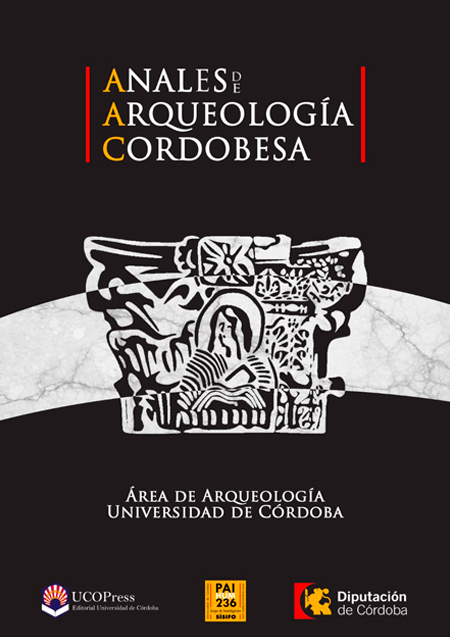Historical significance of facial hair in Octavian’s depictions
DOI:
https://doi.org/10.21071/aac.v0i27.6293Keywords:
Augustus, barbula, Mars Ultor, propagandistic programme.Abstract
It is generally accepted that beard in Roman portraits appeared for first time in Hadrian’s times. The beginning of this trend was properly searched in the Greek world, but the presence of facial hair can already be observed in the Julio-Claudian period. Indeed, it was Augustus, when we still refer to him as Octavian, who started a trend that later will be followed by some of his descendants or successors in charge.Taking into consideration the information provided by ancient sources and the opinions expressed by different scholars, we want to discover what was the real functionality of the beard that Octavian used to depict himself in portraits from 43 to 36 B.C. We are going to focus our research in Roman numismatics. The doubtful preserved sculpture examples of the emperor wearing barbula, focusing our attention on the only portrait with these features classified as Augustus in Hispania.Downloads
Download data is not yet available.
Downloads
Published
2016-12-01
How to Cite
GARCÍA VILLALBA, C. (2016). Historical significance of facial hair in Octavian’s depictions. Anales De Arquelogía Cordobesa, (27), 161–182. https://doi.org/10.21071/aac.v0i27.6293
Issue
Section
ARTICLES
License
Aquellos autores/as que tengan publicaciones con esta revista, aceptan los términos siguientes:- Los autores/as conservarán sus derechos de autor y garantizarán a la revista el derecho de primera publicación de su obra, el cuál estará simultáneamente sujeto a la Licencia de reconocimiento de Creative Commons que permite a terceros compartir la obra siempre que se indique su autor y su primera publicación esta revista.
- Los autores/as podrán adoptar otros acuerdos de licencia no exclusiva de distribución de la versión de la obra publicada (p. ej.: depositarla en un archivo telemático institucional o publicarla en un volumen monográfico) siempre que se indique la publicación inicial en esta revista.
- Se permite y recomienda a los autores/as difundir su obra a través de Internet (p. ej.: en archivos telemáticos institucionales o en su página web) antes y durante el proceso de envío, lo cual puede producir intercambios interesantes y aumentar las citas de la obra publicada. (Véase El efecto del acceso abierto).


